Learn how to make a gluten free sourdough starter to bake up delicious sourdough goodies!
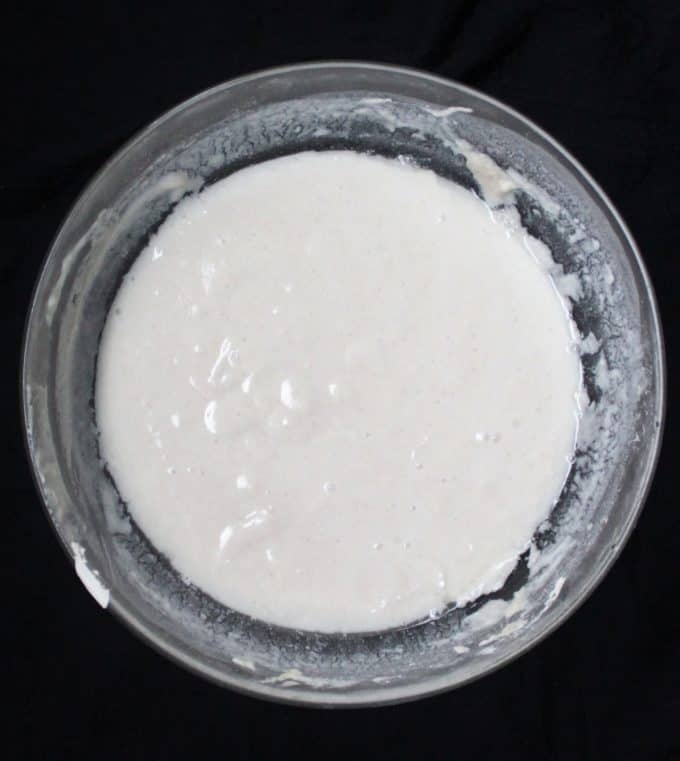
Some of you have been asking me for a gluten free sourdough starter recipe, so here it is.
You know I love to bake with sourdough and although I've largely cut gluten out of my diet because of my struggle with hypothyroidism, I do continue to consume foods with sourdough because I think their benefits outweighs the risks. (While I do not have celiac disease and therefore am not gluten-insensitive, recent research shows that sourdough made with wheat flour can actually be tolerated by some with gluten insensitivity.)
But I do love baking gluten-free too, and that's why I decided it was time to take the plunge and try a gluten-free sourdough starter.
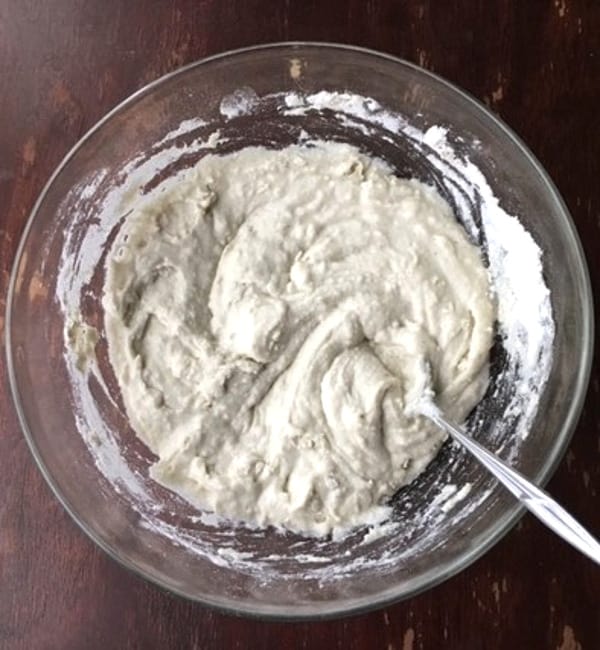
Besides, if you eat gluten-free yourself, all the time or occasionally, I'm sure you'll agree that it's worth making your own gluten-free goodies. That is because storebought gluten-free foods present two big problems: sticker shock and carb overload.
The good news with sourdough is, it reduces carb overload in any food -- the probiotic bacteria digest the starches and reduce the glycemic index of the baked food. And although gluten-free flours tend to be much more expensive than wheat flours, making your bread or other gf goodies at home is definitely way more economical than buying them pre-made.
Besides, I don't really see gluten-free sourdough breads available at any of the stores I go to.
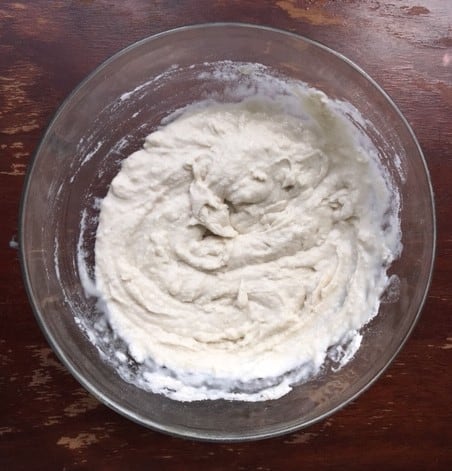
You can use any gluten-free flour for the starter -- preferably an all-purpose flour. I went with the King Arthur Measure for Measure GF flour, because that's what I had. But as I fed my starter, I used up all kinds of all purpose gluten-free flours I had on hand, including one from Trader Joe's, and another that had sat in my pantry, probably for years. It all worked.
For this sourdough starter, I am including -- as I did with my wheat sourdough starter recipe-- photos of how it looked over time. Here are a couple of things I noticed, and you probably will too.
The gluten-free starter appeared to start developing almost immediately. It began to bubble and rise after the first day of sitting, and that could be for two reasons -- it was really warm here when I started it, and also my kitchen is probably full of wild yeast, because I use sourdough just so much. But it started to cool down by day 3 or 4 and at that time the starter appeared to slow down, with little evidence of any activity other than the sourdough scent and a few bubbles.
One piece of good news for those of you who, like me, think frugally, I found ways to use up my sourdough discard -- the portion you remove from your new sourdough starter to "feed" it -- from day one. I used the discard from the first couple of days to make a sourdough flatbread, and then collected and used the discard from days four and five for these buckwheat oat waffles that were out of this world.
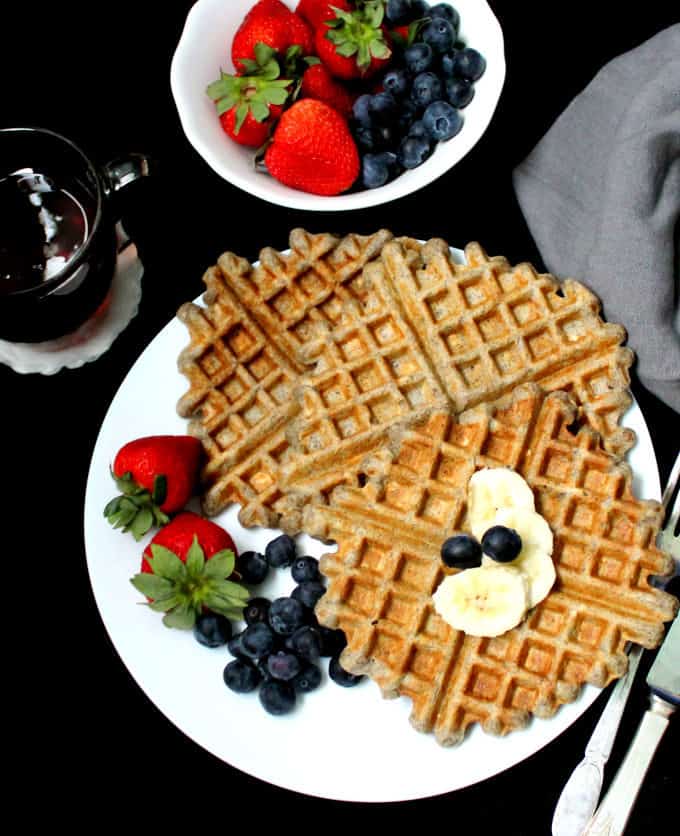
Tips for making a gluten free sourdough starter:
- Use any kind of all purpose gluten-free flour. I haven't tried using flours like buckwheat or millet or oat to make the starter and I can't attest if these will work, but what I do know is that an all purpose gluten-free flour will.
- Keep your sourdough starter warm. When it's cold here, I put the starter in the oven with the pilot on. In warmer weather, leave it on your countertop.
- Make sure you feed your gluten free sourdough starter every day for at least a week to make it strong so it can work for you.
- Gluten free flour tends to be thirsty, so I used a 1:0.75 flour to water ratio. For one cup of flour, use ¾ths cup of water.
- Always use filtered or distilled water for your sourdough starter and baked goods, for the best results.
And now for the recipe. Happy gf sourdough starter making! And I'll be back with the photos of the final starter in a day or two, and recipes.
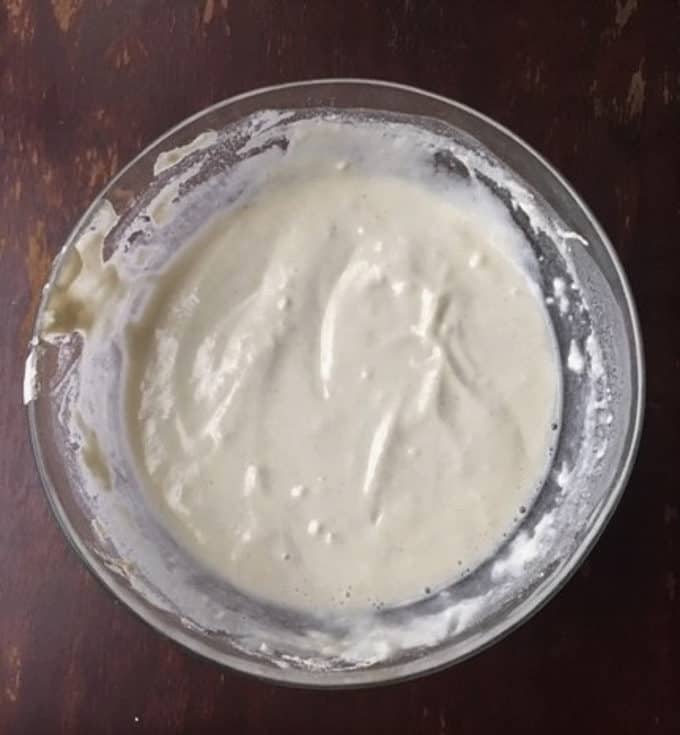
***
Recipes to make with the gluten-free sourdough starter:
- Gluten Free Multigrain Sourdough Sandwich Bread
- Gluten-Free Sourdough Boule
- Vegan Gluten Free Sourdough Waffles
- Vegan Gluten-Free Sourdough Pancakes
***
Gluten Free Sourdough Starter recipe:
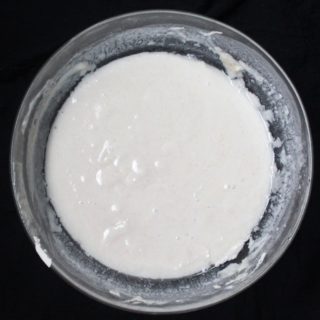
Gluten Free Sourdough Starter
Equipment
Ingredients
- 1 cup gluten-free all purpose flour
- ¾ cup distilled or filtered water
Instructions
- In a large bowl, whisk together the flour and water. Cover with a kitchen towel or cling wrap and place in a warm spot in your kitchen.
- The next day, your starter may or may not look a little bubbly. Discard half a cup of the starter, and feed the starter with ½ cup of flour and ⅜ths of a cup of water.
- Repeat the process for a week. Your starter will gradually take on the typical, tangy fragrance of sourdough and you should see some bubbling. Depending on how frequently you bake, you might find that this happens sooner.
- Once your sourdough starts to visibly rise about three to four hours after feeding, it's strong and ready. At this point you can use it to make your favorite baked goods. Store the starter in the refrigerator in a jar with a lid, and feed at least weekly to keep it going.
Here's the GF sourdough starter on day 8. You can see the bubbling in the side shot of the bowl below, and also how puffy it has become after eight days of feeding. The unexpectedly cool weather hereabouts has slowed me down a bit, so I'll probably keep this going with feedings for another couple of days, before I can refrigerate it and feed it once a week.
I made an amazing glutenfree sourdough multigrain bread with the starter yesterday, after day 7. It had amazing flavor and texture, and I couldn't be happier with how this starter has shaped up. I'll share the bread recipe with you soon too, so stay tuned.
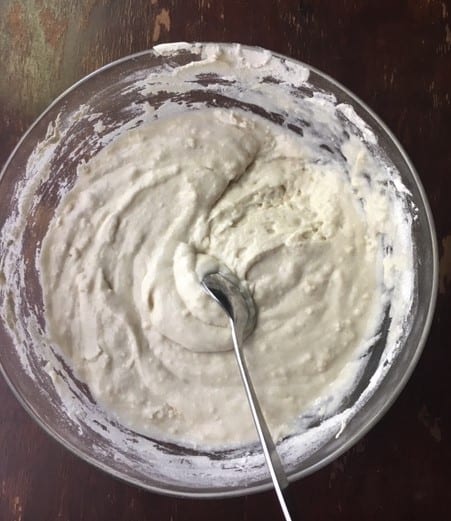
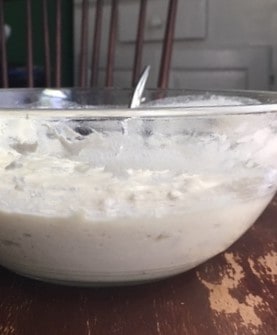
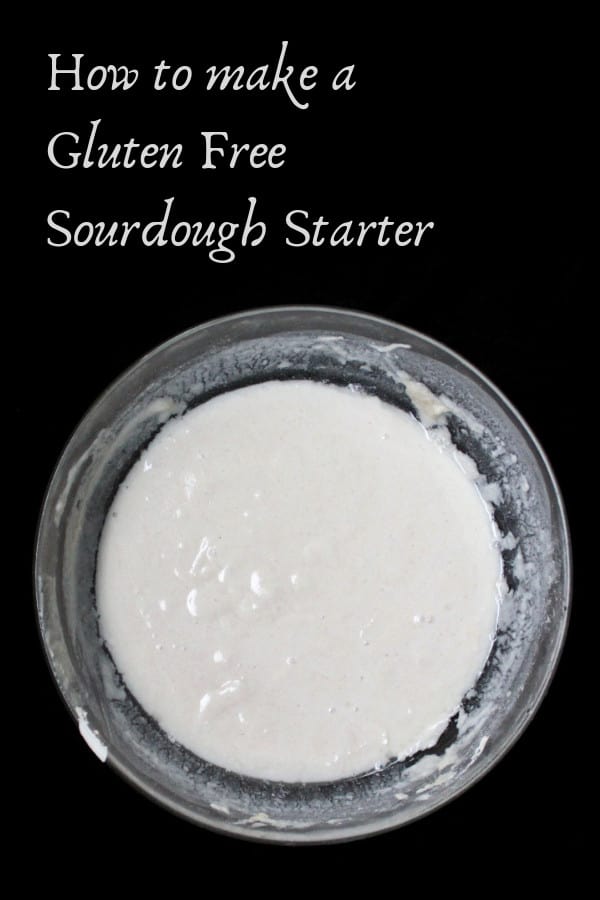

Ravneel
Thanks Vaishali - I have just returned to your site to see if there were any GF bread recipes, as I used to follow your wheat bread and sourdough recipes. So happy to see you have now GF bread recipes including sour dough starter 🙂
Much appreciated. Thank you 🙂
Myrna
Wow! Thank you so much for your enthusiasm and your love for baking and sharing your hard work with us. I’m so blessed to have ran into your site. 🤗
Connie
I'm on day 8 and nothing is happening with my starter.I'm so disappointed. I put starter everyday in oven with pilot. Maybe not warm enough.
Vaishali
Hi Connie, it’s likely the temperature is too low. Try placing it in a room with close to 80 degrees Fahrenheit temperature.
Anonymous
I was reading comments and I only have plastic bowls. Also there is no ace in house that is 80 degrees. Should I keep adding 1/2 cup gf flour and 3/8 cup distilled water or give up?
Vaishali
Does the starter look moldy or smell off? If it does, I'd start over. Otherwise you can keep feeding the starter but you do need a warmer spot if you want to do so.
Anonymous
Starter looks and smells fine.no idea where I can put it that is 80 degrees. Would a crock pot work on low?
Vaishali
You could try but I'm not sure what that temp would be--could be too warm.
Jerica V.
Hey all, I’m 8 days in and ready to start baking bread! I don’t have access to all the ingredients in these awesome sourdough bread recipes. If I were to replace dry yeast in a gluten free recipe, how much starter do I need.
This is the recipe I am referencing from my bread machine: (1.5lb loaf)
- 1 c water
- 4 Tbsp butter
- 3 eggs
- 1 1/4 tsp salt
- 3 Tbsp sugar
- 3 1/4 c all purpose gluten free flour
- 3 Tbsp psyllium husk powder
- 2 Tbsp yeast, active dry, instant or bread machine
Vaishali
I'd use a cup of the gf sourdough starter. Make sure it's strong and bubbly.
Anna
Hi, I've started making the starter and all was going well until day 4 when the mixture started to look too runny (compared to your photos). It has the consistency of runny pancake batter. Can I just feed it with flour to try and restore the consistency? How thick should it be? It smells sour and was producing bubbles on day 3. Thanks. (Hope this works as I've never made bread before, nevermind sourdough).
Vaishali
Hi Anna, the sourdough can sometimes get runny, especially if you are in a warm place. Just continue feeding it according to directions and it should be fine. Also try and keep it in a spot that's around 75 degrees Fahrenheit, not too hot but not cold either. Hope that helps.
Heather
Do you have a vegan and gf sourdough ciabatta recipe to use from the sourdough starter?
Judy Lim
Hi Vaishali,
Can you use parchment paper in the pan rather than oiling the pan?
Judy
Sarah G
When you say, “the next day” in your instructions, are you talking 12 or 24 hours? I make normal sourdough and usually let it sit for 12 hours. But that is with a very mature starter. I have to switch to GF permanently so I am trying out your starter - first attempt at making a starter - My wheat starter was passed down to me. I started my starter on day one in the evening and let it sit overnight. So should I feed it day two that next morning, or again at night? Meaning feeding every 12 hours/ twice a day or every 24 hours? It is not bubbling yet or really doing anything at the first 14 hour mark. I am using King Arthur Measure for Measure flour with filtered spring water - purchased water, not home filtered.
Rebecca
Also, when storing the sourdough starter in the refrigerator, how should I be covering it? Tightly covered o lightly covered? Thanks!